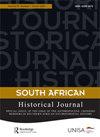International Beef Packing in the Age of Empire: LEMCO in South West Africa, 1906–c.1940
IF 1
3区 历史学
Q1 HISTORY
引用次数: 1
Abstract
ABSTRACT From 1906, the Liebig’s Extract of Meat Company (LEMCO), parent of the Oxo and Fray Bentos brands, entered colonial Namibia as an export-oriented ranching and beef-processing enterprise, purchasing pastureland recently emptied by the Nama-Herero war, with the goal of replicating its successful South American operations in Africa. While LEMCO hoped to expand its markets in Germany and South Africa, the German colonial government anticipated that LEMCO would improve cattle and landscapes in South West Africa and offer German settlers an industrial outlet for their cattle. Unlike the major global beef suppliers, LEMCO relied on arid environments, using natural pastures and low-grade cattle, making Namibia supposedly ideal for its production. Yet ecological and human factors specific to South West Africa, including recurrent severe drought, sparse human populations, and international and transborder disease controls challenged these ambitions. While LEMCO’s multinational scope enabled it to navigate Anglo-German rivalries during the First World War, South African regional imperialism leading up to the Second World War, coupled with severe droughts during the interwar period, expedited the company’s exit from South West Africa in 1940. Its model of beef packing continued into the apartheid and post-independence periods.帝国时代的国际牛肉包装:西南非洲LEMCO,1906–1940年
从1906年起,拥有Oxo和Fray Bentos品牌的Liebig 's Extract of Meat Company (LEMCO)作为一家以出口为导向的牧场和牛肉加工企业进入了殖民时期的纳米比亚,收购了最近因纳马-赫雷罗战争而被清空的牧场,目的是在非洲复制其在南美的成功经营模式。虽然LEMCO希望扩大其在德国和南非的市场,但德国殖民政府预计LEMCO将改善西南非洲的牛和景观,并为德国定居者提供牛的工业出口。与全球主要的牛肉供应商不同,LEMCO依赖干旱的环境,使用天然牧场和低等级的牛,这使得纳米比亚被认为是其生产的理想之地。然而,西南非洲特有的生态和人为因素,包括经常性严重干旱、人口稀少以及国际和跨界疾病控制,对这些雄心壮志构成了挑战。虽然LEMCO的跨国业务范围使其能够在第一次世界大战期间顺利度过英德竞争,但南非地区的帝国主义导致第二次世界大战,加上两次世界大战期间的严重干旱,加速了公司在1940年退出西南非洲。它的牛肉包装模式一直延续到种族隔离和后独立时期。
本文章由计算机程序翻译,如有差异,请以英文原文为准。
求助全文
约1分钟内获得全文
求助全文
来源期刊

South African Historical Journal
Multiple-
CiteScore
0.70
自引率
0.00%
发文量
37
期刊介绍:
Over the past 40 years, the South African Historical Journal has become renowned and internationally regarded as a premier history journal published in South Africa, promoting significant historical scholarship on the country as well as the southern African region. The journal, which is linked to the Southern African Historical Society, has provided a high-quality medium for original thinking about South African history and has thus shaped - and continues to contribute towards defining - the historiography of the region.
 求助内容:
求助内容: 应助结果提醒方式:
应助结果提醒方式:


